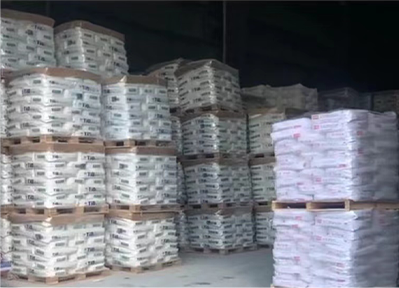
7 月 . 26, 2024 00:23 Back to list
Supplier for Lithopone Production Techniques and Manufacturing Processes for Enhanced Quality and Efficiency
Lithopone Manufacturing Process and Key Suppliers
Lithopone, a white pigment made from a combination of zinc sulfide and barium sulfate, has been widely used in various applications, including paints, coatings, plastics, and paper. Its unique properties, such as high opacity, brightness, and resistance to environmental degradation, make it a preferred choice for many industries. This article delves into the manufacturing process of lithopone and highlights key suppliers in this market.
Manufacturing Process of Lithopone
The production of lithopone involves several critical steps, which can be broadly categorized into raw material preparation, chemical reaction, washing, drying, and milling.
1. Raw Material Preparation The primary raw materials for lithopone are barium sulfate (BaSO₄) and zinc sulfide (ZnS). These compounds can be sourced from natural minerals or produced synthetically. The quality of the raw materials is crucial, as impurities can affect the final product's performance.
2. Chemical Reaction The core of lithopone production is a controlled chemical reaction where zinc sulfide is precipitated in the presence of barium sulfate. This reaction usually occurs in a slurry form, where the barium sulfate acts as a core material. The process typically involves mixing zinc sulfate and sodium sulfide, followed by the introduction of barium sulfate. This results in the formation of lithopone as a precipitate.
3. Washing After the precipitation, the resulting mixture contains lithopone along with excess reagents and byproducts. Washing eliminates these impurities and helps achieve a purer form of lithopone. This step is critical to ensure that the final product adheres well to substrates and maintains its notable properties.
4. Drying The washed lithopone is then dried to remove any moisture content. This step can be accomplished using various drying methods, including air drying or using dryers that apply heat. The objective is to achieve an optimal moisture level, which is essential for the powder's stability and shelf life.
5. Milling The dried product is milled to achieve the desired particle size and distribution. This process is vital, as the fineness of the pigment significantly affects its performance in applications. A fine particle size typically leads to better opacity and coverage.
lithopone manufacturing process supplier

6. Quality Control Throughout the manufacturing process, quality control tests are implemented to ensure that the lithopone meets industry standards. These tests may include measuring brightness, opacity, and particle size distribution.
Key Suppliers in the Lithopone Market
Several global suppliers specialize in the manufacture of lithopone, providing high-quality products to various industries. Notable companies in this sector include
1. Hawkins Group Known for their high purity lithopone products, Hawkins Group has established a strong presence in the chemical and pigment industry. Their commitment to quality and customer service has earned them a loyal customer base.
2. Tioxide A subsidiary of the multinational chemical company Huntsman, Tioxide produces a variety of titanium dioxide and lithopone products. Their advanced manufacturing processes ensure high-quality standards and consistent supply.
3. Kremsmünster GmbH This Austrian company is a significant player in the lithopone market, known for its innovative approaches to pigment manufacturing. Kremsmünster emphasizes sustainability and efficiency in its manufacturing processes.
4. Sachtleben Chemie Operating globally, Sachtleben Chemie offers a range of lithopone grades suited for different applications. Their extensive research and development efforts allow them to stay at the forefront of pigment technology.
In conclusion, the lithopone manufacturing process is a complex interplay of chemical reactions and careful control of conditions to produce a high-quality pigment. As demand for advanced materials increases, suppliers must continue to innovate and maintain stringent quality standards to meet industry needs. Companies like Hawkins Group, Tioxide, Kremsmünster GmbH, and Sachtleben Chemie play crucial roles in ensuring the supply of this essential material to various sectors.
-
Lithopone for Plastic & TiO2 R-5568/SK-6658 Masterbatch Solutions
NewsMay.30,2025
-
China Leading Rutile TiO2 Manufacturer - R5566 & R996 Grades Available
NewsMay.30,2025
-
High-Purity Anatase & Rutile TiO2 Powder Trusted Manufacturer
NewsMay.30,2025
-
High-Purity Anatase Products Trusted Supplier & Manufacturer
NewsMay.29,2025
-
Best Price Eco-Friendly Rutile TiO2 Supplier & Wholesale Factory
NewsMay.29,2025
-
Chinese Anatase Titanium Dioxide for Ceramic Glaze Reliable Supplier
NewsMay.29,2025
